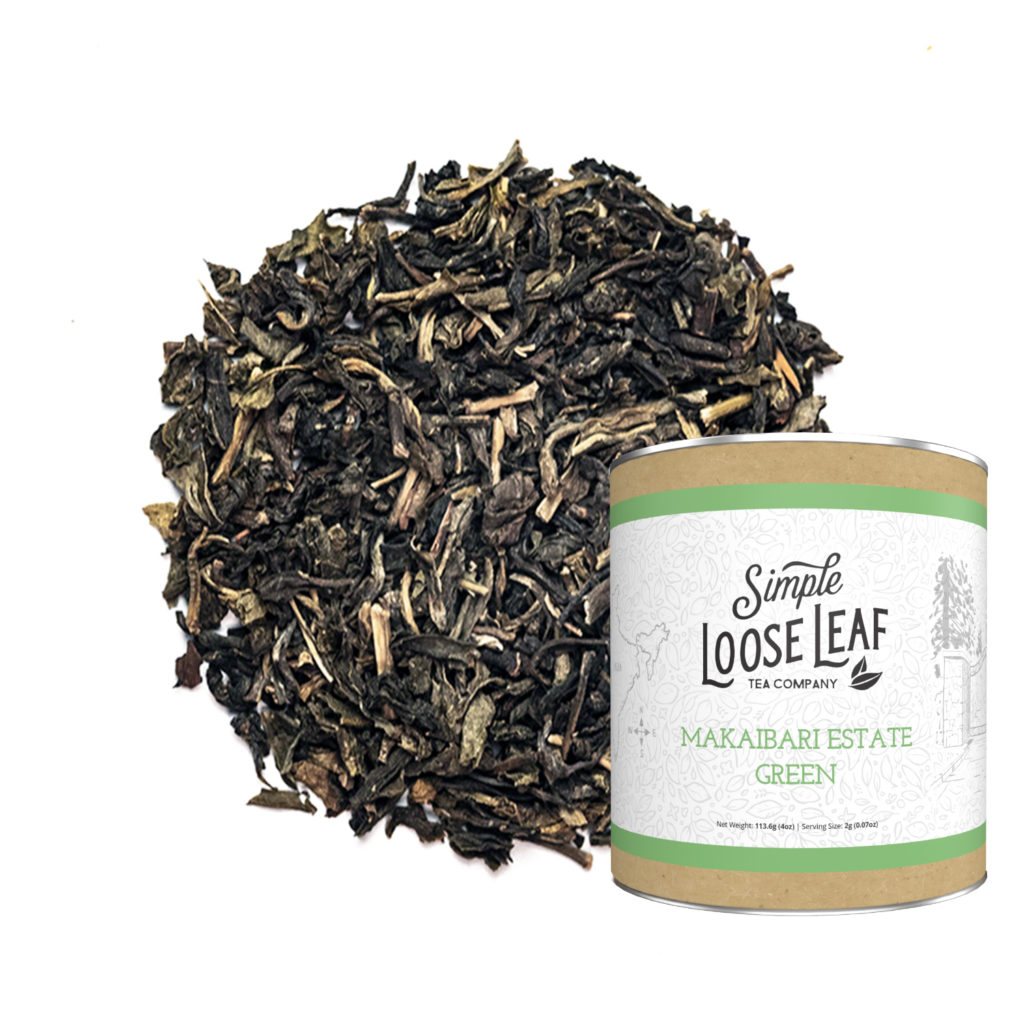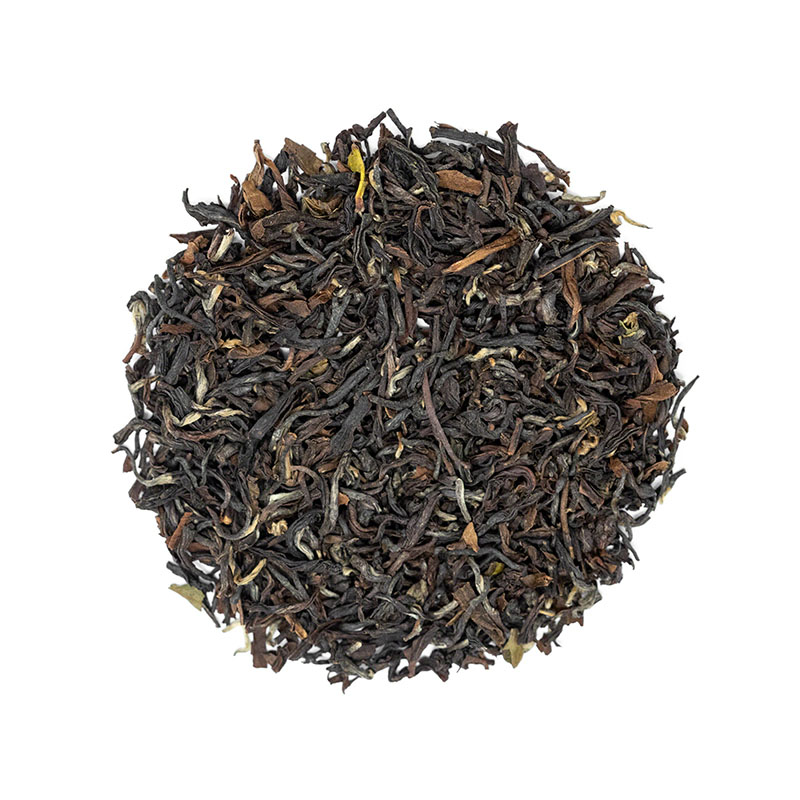Drinking Darjeeling Tea Guide
Darjeeling, a champagne among black teas, comes from India and is one of the most important and appreciated black teas in the world. It’s unlike any other tea, and stands out for its flavor, appearance and even - processing method. Read why it is special and what are the potential health benefits of drinking Darjeeling tea.


What is Darjeeling tea?
Darjeeling tea is a black tea type from the Darjeeling district in West Bengal, India. Currently, there are 87 tea gardens and 72 tea factories in Darjeeling[1]. They produce black, oolong, green and white teas. However, what is usually hidden under the name Darjeeling is black tea. The first tea in the area was planted less than 200 years ago. Tea planting started on the Makaibari Tea Estate, an estate that is still producing Darjeeling tea. The same estate was the home of the first tea factory in the area opened in 1859.[2] Interestingly, the knowledge of growing and processing tea was passed on from the Chinese tea growers[3]. First types of tea produced in Darjeeling were black, but today many estates are experimenting with other types. All of them share the unique Darjeeling character.
Green teea from Makaibari Tea Estate
Why is Darjeeling unique?
Unlike teas from the Indian Assam state, Darjeeling tea is made from Camellia sinensis var. sinensis plant. Assam tea uses assamica tea plant with more robust flavor, bigger leaves and usually more caffeine. Camellia sinensis var. sinensis is used mostly in China and Japan, for producing green, white, oolong, black and yellow tea. The main difference between Darjeeling and any other black tea is that it’s not fully fermented. However, this is not true for all Darjeeling tea flushes. The percentage of fermentation is visible from the color of the tea leaves–the darker the color, the more fermented they are. First flush Darjeeling tea harvested in spring is usually lighter, with many greenish leaves. Other flushes will usually have brown, darker tea leaves. Darjeeling tea has three flushes – spring, summer and autumn, and it can have two in-between flushes. The first and second flush are usually the best, but many argue with one is better. Both of them give teas with complex flavor and are almost always better without any milk or sugar. Other flushes such as autumnal flush are often used for blending into different blends.
Darjeeling second flush black tea
Caffeine content
Although it's commonly thought that Assam tea has more caffeine, that may not be always true. Darjeeling is made from younger leaves and buds that contain more caffeine than older more mature leaves. Research showed that with 1.7 grams of caffeine per 100 grams of leaf, it generally has more caffeine than other Indian loose leaf teas such as Assam or Nilgiri. However, fannings and broken dust from other Indian teas may give a stronger cup[4]. The total content will depend on the type of leaves, flush, processing and brewing method too.Benefits of drinking Darjeeling tea
Darjeeling is a black tea, so it shares the same benefits as other black teas. However, every tea is different, and the total amount of beneficial compounds will depend on the harvest, the way you store your tea and the way you brew it. Potential health benefits of Darjeeling tea are:1. Antioxidant activity and boosting immune system
The anti oxidative activity in black tea comes from thearubigins and theaflavins. They may help scavenge free radicals and help reduce oxidative stress[5] that causes cellular damage. Cellular damage can further lead to many diseases and health problems, including cancer, heart diseases and aging.2. Promoting weight loss
Although green and oolong tea are more popular choices for loosing weight, drinking Darjeeling tea may help with weight loss goals too. Research showed that polyphenols in black tea have an excellent anti-obesity properties[6]. They may help reduce the calorie intake and help burn the fat faster.3. Regulating blood pressure
Drinking black tea may help with lowering blood pressure and reducing the risk of a heart attack, stroke or kidney damage[7]. Interestingly, it can also lower the blood pressure. Studies show that long-term drinking of black tea may help balance the pressure for people with either low or high blood pressure[8].4. Improving bone density
Another great benefit of drinking black tea may increase the bone density. Bone density is related to the risk of of osteoporosis. Research showed that black tea may be beneficial to reduce that risk, especially in women[9].5. Reducing the risk of Parkinson’s disease
Studies showed that black teas may be more beneficial than green teas in reducing the risk of Parkinson’s disease. This may be related to both caffeine and other compounds found in black tea, such as thearubigins and theaflavins[10].How to brew Darjeeling tea
Unlike Assam teas, teas from Darjeeling taste better without milk or sugar. Darjeeling is not malty as Assam and has a muscatel and fruity note. It’s lighter both in color and texture. To brew Darjeeling tea, always use fresh spring water. The choice of water is very important if you want to experience all flavor nuances of Darjeeling tea. Water temperature should be around 185°F to 194 °F. Steep for 3 minutes. Spring flush will have a lighter and fresher flavor, while the summer one will always be stronger.Disclaimer: This article is for informational purposes only. It’s not intended to replace medical advice, diagnosis or treatment. Every person is different and may react to different herbs and teas differently. Never use teas or herbs to treat serious medical conditions on your own. Always seek professional medical advice before choosing home remedies.
References:
[1] https://www.darjeeling-tourism.com/darj_0000bf.htm [2] https://www.darjeeling-tourism.com/darj_0000bc.htm [3] https://www.darjeeling-tourism.com/darj_0000bc.htm [4] https://www.ncbi.nlm.nih.gov/pmc/articles/PMC5380613/ [5] https://www.nature.com/articles/1602489 [6] https://www.ncbi.nlm.nih.gov/pmc/articles/PMC6273558/ [7] https://www.ncbi.nlm.nih.gov/pmc/articles/PMC6512146/ [8] https://www.ncbi.nlm.nih.gov/pmc/articles/PMC6512146/ [9] https://www.ncbi.nlm.nih.gov/pmc/articles/PMC5728912/ [10] https://www.ncbi.nlm.nih.gov/pmc/articles/PMC2737529/
More from:
SLL




Leave a comment